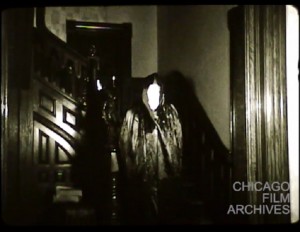
"A short mystery film from members of the Amateur Cinema League. A group of relatives gather in a haunted house for the reading of a will. Someone among them knows a secret about the house, and uses stories about the Black Widow to try and scare everyone away. In the end, their identity is revealed and all the secrets come to light. Title cards narrate the dialogue." Chicago Film Archives.
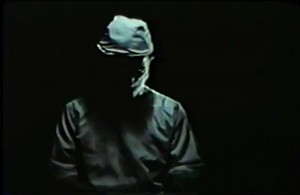
"Filmed by Arthur H. Smith of San Francisco, the story opens with Jackie, a lad of 4 years, playing on the sidewalk near his home. Observing a kitten crossing the street, his natural inclination toward pets impels him to run into the street after it. An unseen car bears down upon the boy and the driver is unable to avoid striking him down. Jackie is rushed to the hospital where his life is saved with difficulty, although he will be permanently crippled. The doctor advises Jackie's parents that although he has survived the operation, the lad has only a short time to live." Home Movies, Dec. 1946, 749.
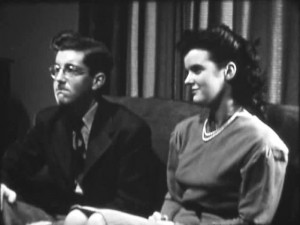
At home in the evening, a sophisticated young woman entertains an awkward male friend of her brother. They make small talk and dance to records -- but the boy's social anxiety overwhelms him, and he disappears in a puff of her cigarette smoke. (D.J. Duffy)
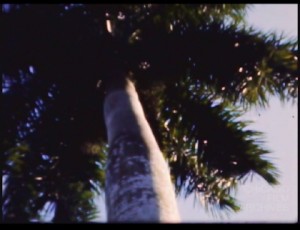
"A short travelogue film of Havana, Cuba shot for the Metro Movie Club, a Chicago amateur film club." Chicago Film Archives.
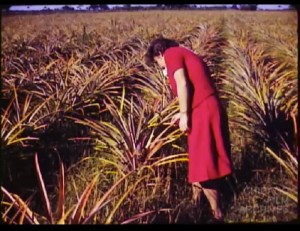
"2 part edited travelogue of the industries and everyday life in featured cities of Cuba. Part 1 begins in Havana before travelling to smaller cities, with a focus on buildings, crops and the everyday lives of the people. Part 2 primarily focuses on industry and includes scenes of a tile factory, basket weaving, as well as the farming of potatoes, sugar cane, bananas, and peanuts. The film also features historical monuments, boating, children at school, cock fights, vendors selling wares, and fishing. People demonstrate manual methods of labor like harvesting crops and cutting grass with machines lead by cattle." Chicago Film Archives.
"Edited film of Greece by a Greek immigrant to the United States was specifically created to educate American audiences to the true qualities and nature of the Greek people. Footage includes Athens, Greek ruins, and country villages," via the Human Studies Film Archives, Smithsonian Museum.
"The coho and spring salmon trolling industry of Vancouver Island's west coast. Includes footage of boats, types of tackle, catching and cleaning fish, buying stations, delivery to the wharf, etc. The packer Co-Operator II is shown." (BC Archives)
The film was shot between 1941 and 1946.
Additional credit: "Produced by the British Columbia Provincial Fisheries Dept."
Additional credit: "This picture was produced with the kind co-operation of the Kyoquot Trollers Co-operative Association."
"Item is a film production of Dr. Willinsky's trip to Trinidad with his wife, Sadie. Filmed in the form of a travelogue, Willinsky intersperses footage of landmarks and the local population with captions that provide information about the country and its culture. Included are shots of sites around Port-of-Spain, cathedrals, mosques, a cricket match, a cocao bean farm, and the local population carrying out their daily activities. Sadie is regularly spotted sight-seeing and interacting with locals." Ontario Jewish Archives.

"Item is a film production of Dr. and Mrs. Willinsky's trip to Lima, Peru to attend the 5th International Assembly of the International College of Surgeons. Footage of assembly delegates, landmarks and the local population are interspersed with captions added by Dr. Willinsky. Included are scenes of assembly delegates near Lima's Workman's Hospital, Sadie visiting the home of the assembly's chairman and entering the palace of Peru's president for a luncheon, sights along the streets of San Martin, cathedrals, shots taken from a moving train, and images of the Ricmac River from a nearby road." Ontario Jewish Archives.
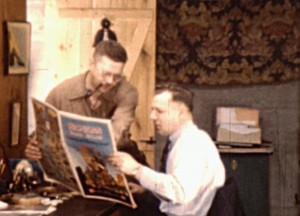
A man schedules a fishing trip several weeks in advance of the date. Before the day comes, he must overcome several mishaps and hindrances that threaten the trip.
Total Pages: 299